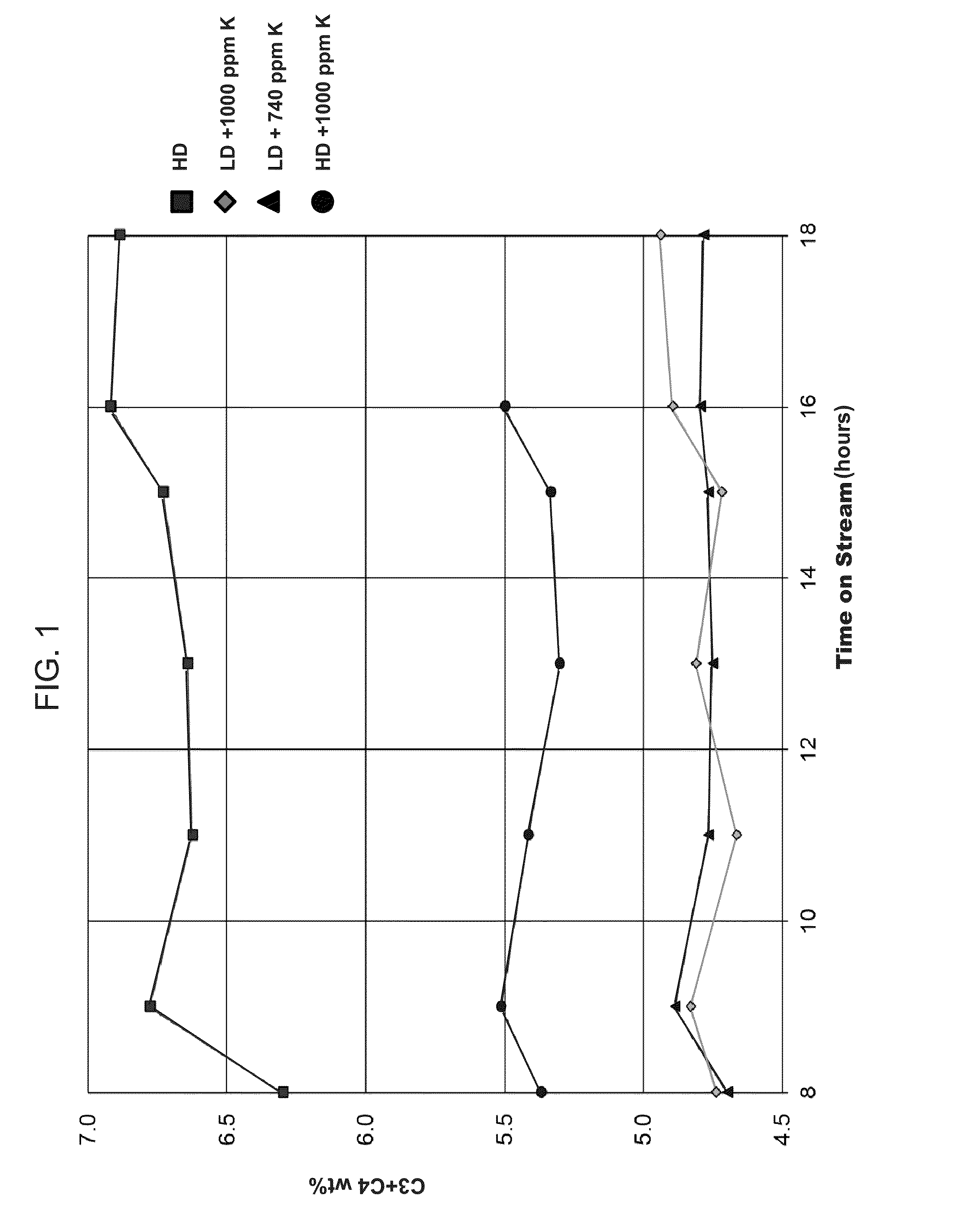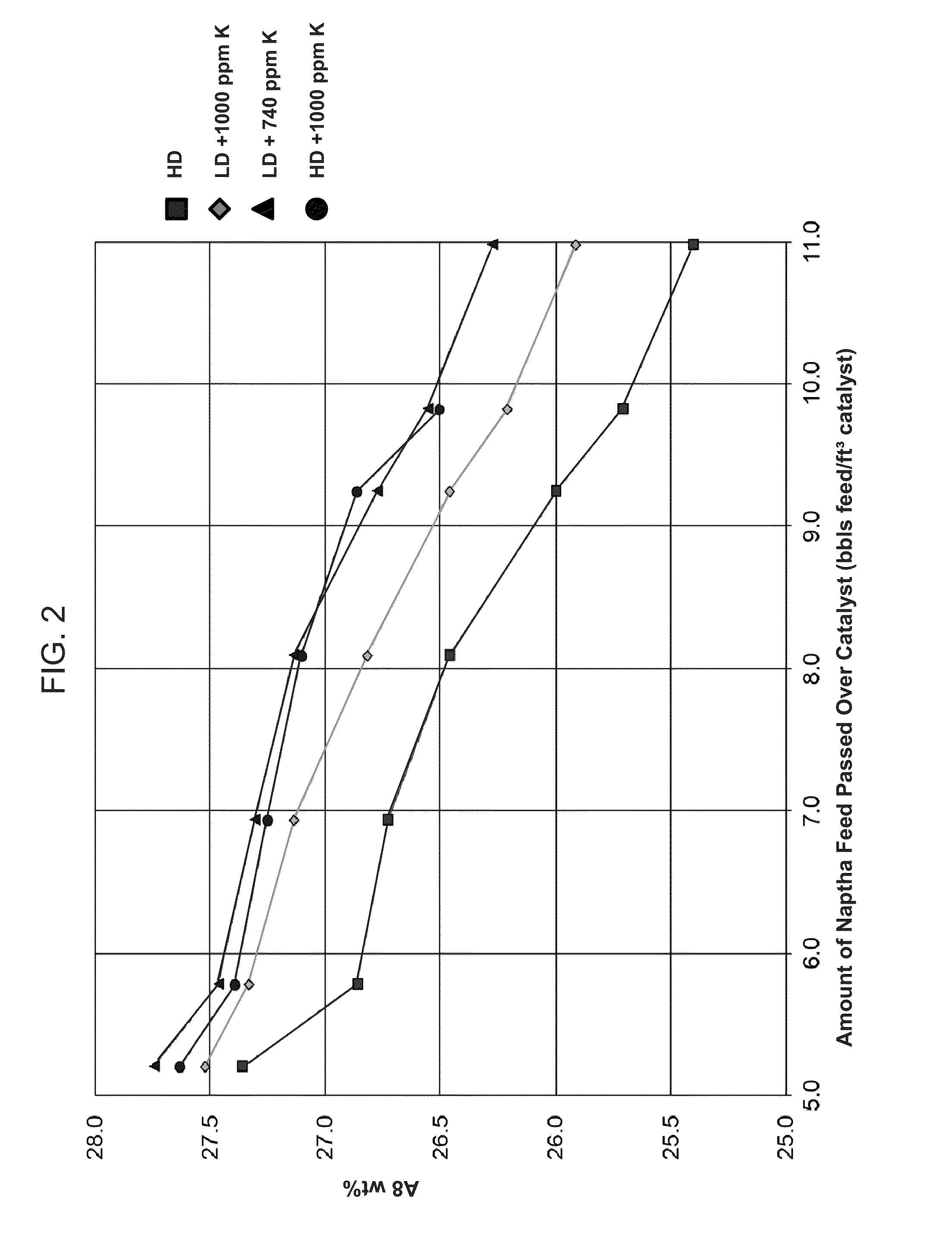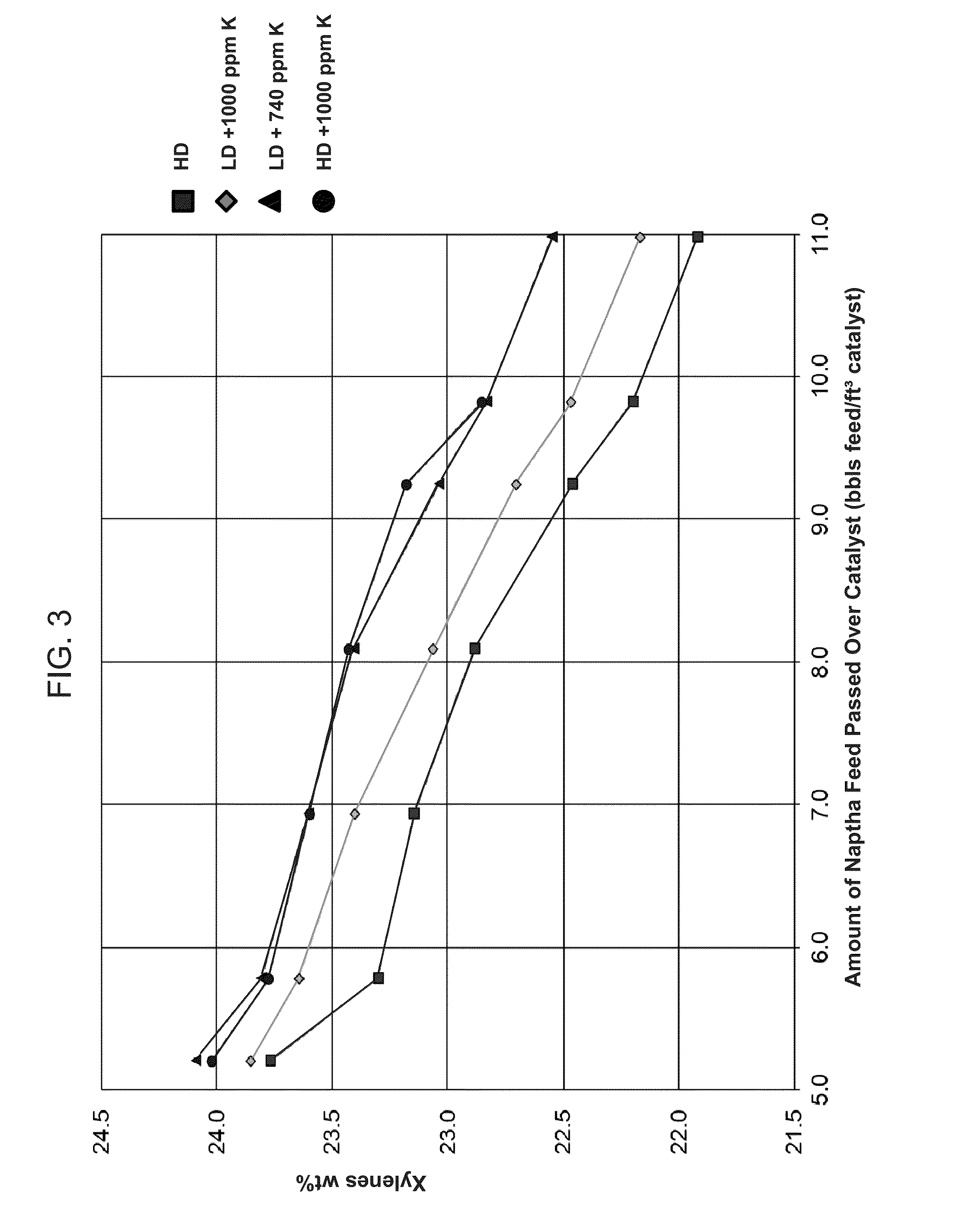High temperature reforming process and catalyst for use therein
- Summary
- Abstract
- Description
- Claims
- Application Information
AI Technical Summary
Benefits of technology
Problems solved by technology
Method used
Image
Examples
Embodiment Construction
[0021]As used herein, hydrocarbon molecules may be abbreviated C1, C2, C3 . . . Cn, where “n” represents the number of carbon atoms in the one or more hydrocarbon molecules. Cn+are hydrocarbons with n or more hydrocarbon atoms. Cn−are hydrocarbons with n or fewer hydrocarbon atoms.
[0022]As used herein, the terms “alkanes” and “paraffins” may be used interchangeably.
[0023]As used herein, the terms “alkenes” and “olefins” may be used interchangeably.
[0024]As used herein, the term “weight percent” may be abbreviated as “wt %”.
[0025]The present invention uses a catalyst comprising (i) a refractory inorganic oxide support, (ii) a platinum group metal, (iii) a Group IVA metal, (iv) a third metal selected from the group consisting of alkali metals and alkaline earth metals, and (v) a halogen.
[0026]The refractory inorganic oxide support usually is a porous, adsorptive, high-surface area support having a surface area of about 25 to about 500 m2 / g. Non-limiting example refractory inorganic ox...
PUM
 Login to View More
Login to View More Abstract
Description
Claims
Application Information
 Login to View More
Login to View More - R&D
- Intellectual Property
- Life Sciences
- Materials
- Tech Scout
- Unparalleled Data Quality
- Higher Quality Content
- 60% Fewer Hallucinations
Browse by: Latest US Patents, China's latest patents, Technical Efficacy Thesaurus, Application Domain, Technology Topic, Popular Technical Reports.
© 2025 PatSnap. All rights reserved.Legal|Privacy policy|Modern Slavery Act Transparency Statement|Sitemap|About US| Contact US: help@patsnap.com



